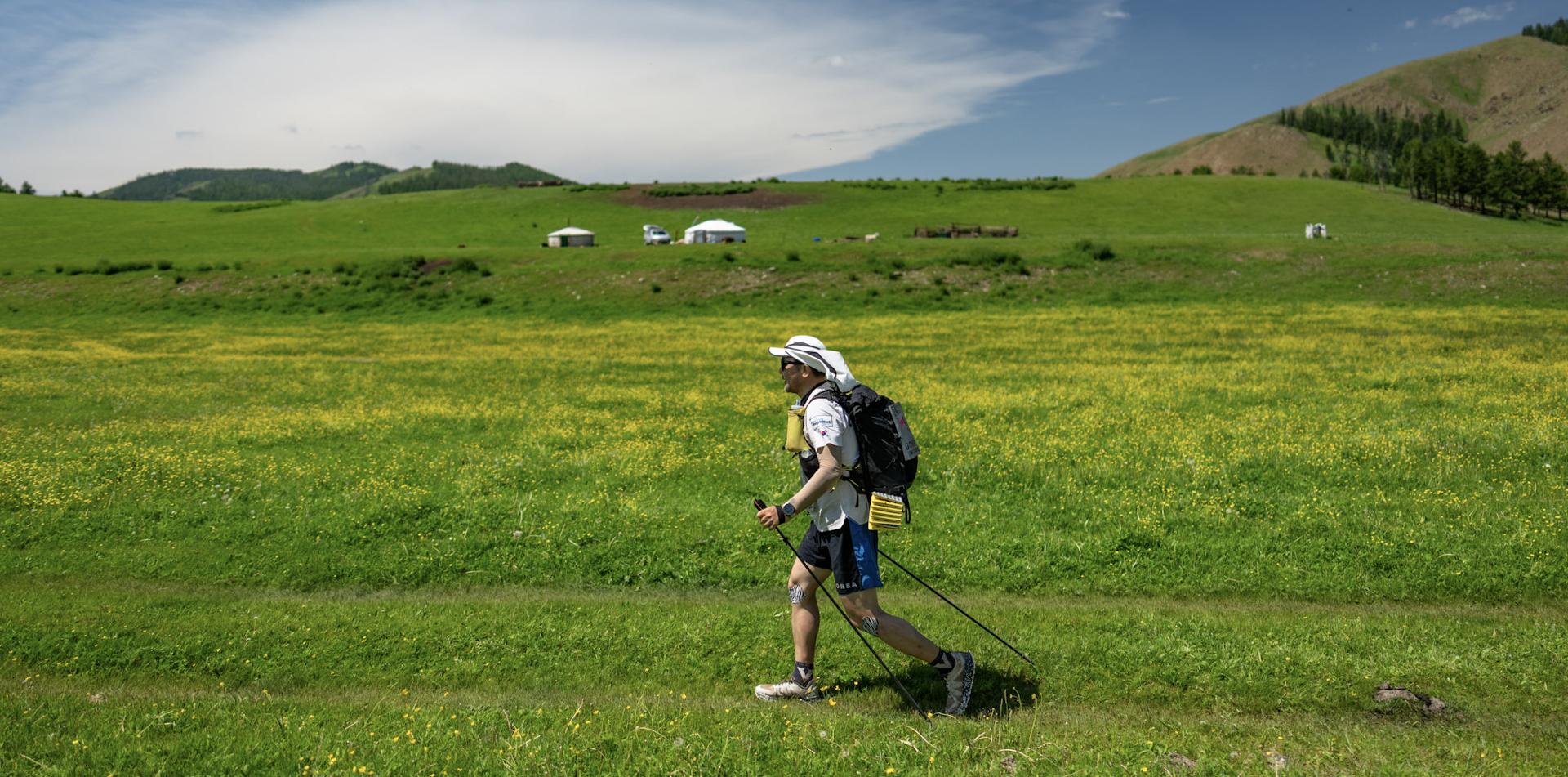RACE INFO

RACE INFO
MONGOLIA 2026: LOCATION, WEATHER, CULTURE & TRAVEL
Mongolia, raw wilderness and natural beauty as far as the eye can see. The Gobi March (Mongolia) takes place in the culturally rich and visually stunning area of Karakorum within the Orkhon Valley, a UNESCO World heritage region. It’s around 360km southwest of the capital, and host town of Ulaanbaatar.
Karakorum was the capital city for the great Mongol leader Genghis Khan in the 13th and 14th century, and back then, was strategically located at the intersection of east-west and north-south Silk Road routes across Mongolia.
Today, it sits within some of the world’s most stunning desert scenery - the Gobi Desert is a land of steppes, sands and mountains. It is rich with wildlife and is home to the two-humped camel. The Gobi Desert is also the largest dinosaur fossil reservoir in the world.
LOCATION
Mongolia is a landlocked country in East Asia, sandwiched between Russia to the north, and China to the south. It’s over 1.5 million square kilometres / 600,000 square miles, and has a population of just 3 million people making it the most sparsely populated sovereign state in the world.
The host town for the race is the capital city of Ulaanbaatar - which translates to “Red Hero”. Around 1.3 million people live here, almost half of Mongolia’s population. This bustling city, known for its stark contrasts, is where you will be able to experience the local culture of Mongolia whilst also enjoying the busy life of the modern-day country.
The race itself takes place on the edge of the Orkhon Valley, a UNESCO World heritage region and part of the Gobi Desert. Notable in history as part of the great Mongol Empire, the desert straddles two countries, Mongolia and China.
WEATHER
Known as the ‘Land of the Eternal Blue Sky’, Mongolia has over 250 sunny days a year. However, climate varies greatly depending on the specific location – from plain, to desert to mountain. Because of its high altitude the country has very cold winters – as low as -40°C / -40°F, and short but warm summers – temperatures can reach as high as 50°C / 122°F.
The average temperature in June is approximately 25°C / 77°F. Temperatures may rise up to 30°C / 86°F during the day and drop to 0°C / 32°F at night. There is also a possibility of rainfall during the race.
Although nowhere near as cold during race week - the annual average temperature in Ulaanbaatar is -1°C / -30.2°F making it the world’s coldest capital city.
CULTURE
The Gobi March features ancient history and culture in abundance. Taking place on the green grasslands of nomads – the race begins at the ancient ruins of Khar Bukh Balgas, and finishes at the Erdene Zuu Monastery, located in Karakorum, the 13th and 14th century capital of Genghis Khan’s empire.
The course itself crosses central Mongolia, winding its way through vast green grasslands, stupas and temples, sand dunes, great rock valleys and old forests. At times, competitors will sleep in traditional Mongolian gers.
So immense is the scale of the Gobi Desert, the very concepts of time and distance seem meaningless.
The main national festival is Naadam. For centuries people have gathered to celebrate the foundation of the Great Mongol State. Recognised as the ‘Three Manly Games’, the festival features Mongolian traditional sports – archery, cross-country horse racing, and wrestling.
TRAVEL HIGHLIGHTS
Often, before and after the race, competitors will take the opportunity to ‘discover Mongolia’. There are so many wonderful reasons why people are attracted to the ancient lands.
The Flaming Cliffs in Bulgan glow a fiery red during the setting of the sun. This ancient formation is believed to be between 71 – 75 million years old. Dinosaur eggs were first discovered in this area in the 1920s. Terkhiin Tsagaan Lake, also known as White Lake, due to the thick layer of snow sitting on its frozen surface for the better part of the year, is one of the most dazzling in Mongolia, sitting a mile and a quarter (2,060 m) above sea level. On the northeast shore you can see a dramatic and jagged silhouette against the azure sky, made by shamanistic heaps of stones called “ovoos.”
There are many wild animals, including black-tailed gazelles, marbled polecats, Bactrian camels, Mongolian wild ass and various birds to see. And if you didn’t get the opportunity during the race, watching the sunrise and sunset on the top of the sand dunes will blow you away.
Half of Mongolia’s population - approximately 1.3 million people - lives in Ulaanbaatar. This means you will find an interesting mix of the country’s twenty-nine ethnic groups. The colourful culture, unique way of life and lack of visitors from outside makes Ulaanbaatar a unique place in Central Asia!







 Newsletter
Newsletter
 Online Store
Online Store
 Login
Login




















